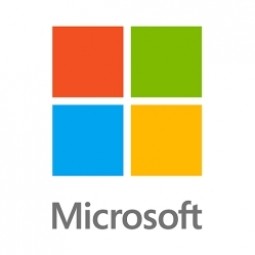下载PDF
Driving Digital Transformations for Vitro Diagnostic Medical Devices

技术
- 分析与建模 - 预测分析
- 功能应用 - 远程监控系统
- 平台即服务 (PaaS) - 数据管理平台
适用行业
- 医疗保健和医院
适用功能
- 商业运营
用例
- 远程资产管理
挑战
诊断设备在帮助改善医疗保健服务方面发挥着至关重要的作用。事实上,世界上大约 60% 的医疗决策是在体外诊断 (IVD) 解决方案的支持下做出的,例如由行业领导者罗氏诊断提供的解决方案。
随着中国各地医院和诊所对医疗诊断服务的需求快速增长,体外诊断解决方案市场也在快速增长。此外,这些诊断设备的成本通常很高,这意味着需要全面的售后服务。
想要改善 thr IVD 的三个部分:
1.作为固定资产远程监控和管理IVD设备。
2. 通过预测性维护优化设备可用性。
3. 为客户的需求推荐最佳的体外诊断解决方案。
客户
罗氏诊断
关于客户
IVD解决方案的行业领导者
解决方案
借助 Azure IoT 解决方案加速器和 IoT 中心,Cleidon 为 Roche Diagnostics 提供了一个有效的平台,可以智能地远程连接和管理其 IVD 设备。反过来,这些功能使公司能够从这些设备中近乎实时地收集运营数据,例如位置。该公司现在可以评估每个 IVD 系统的健康数据,解决任何问题,如果出现问题,可以触发警报以提醒和派遣支持团队进行服务。
Cleidon 还为 Roche Diagnostics 开发了一种方法来精确安排更换用品的交付,因此客户可以放心,他们的 IVD 系统将持续有效地运行。
此外,一旦通过其 Microsoft Azure IoT 平台从足够多的设备收集到足够的运营数据,Cleidon 计划为罗氏诊断 IVD 安装群构建和部署预防性维护模型。
收集的数据
Asset Location, IVD Devices
运营影响
相关案例.

Case Study
Hospital Inventory Management
The hospital supply chain team is responsible for ensuring that the right medical supplies are readily available to clinicians when and where needed, and to do so in the most efficient manner possible. However, many of the systems and processes in use at the cancer center for supply chain management were not best suited to support these goals. Barcoding technology, a commonly used method for inventory management of medical supplies, is labor intensive, time consuming, does not provide real-time visibility into inventory levels and can be prone to error. Consequently, the lack of accurate and real-time visibility into inventory levels across multiple supply rooms in multiple hospital facilities creates additional inefficiency in the system causing over-ordering, hoarding, and wasted supplies. Other sources of waste and cost were also identified as candidates for improvement. Existing systems and processes did not provide adequate security for high-cost inventory within the hospital, which was another driver of cost. A lack of visibility into expiration dates for supplies resulted in supplies being wasted due to past expiry dates. Storage of supplies was also a key consideration given the location of the cancer center’s facilities in a dense urban setting, where space is always at a premium. In order to address the challenges outlined above, the hospital sought a solution that would provide real-time inventory information with high levels of accuracy, reduce the level of manual effort required and enable data driven decision making to ensure that the right supplies were readily available to clinicians in the right location at the right time.

Case Study
Gas Pipeline Monitoring System for Hospitals
This system integrator focuses on providing centralized gas pipeline monitoring systems for hospitals. The service they provide makes it possible for hospitals to reduce both maintenance and labor costs. Since hospitals may not have an existing network suitable for this type of system, GPRS communication provides an easy and ready-to-use solution for remote, distributed monitoring systems System Requirements - GPRS communication - Seamless connection with SCADA software - Simple, front-end control capability - Expandable I/O channels - Combine AI, DI, and DO channels

Case Study
HaemoCloud Global Blood Management System
1) Deliver a connected digital product system to protect and increase the differentiated value of Haemonetics blood and plasma solutions. 2) Improve patient outcomes by increasing the efficiency of blood supply flows. 3) Navigate and satisfy a complex web of global regulatory compliance requirements. 4) Reduce costly and labor-intensive maintenance procedures.

Case Study
Harnessing real-time data to give a holistic picture of patient health
Every day, vast quantities of data are collected about patients as they pass through health service organizations—from operational data such as treatment history and medications to physiological data captured by medical devices. The insights hidden within this treasure trove of data can be used to support more personalized treatments, more accurate diagnosis and more advanced preparative care. But since the information is generated faster than most organizations can consume it, unlocking the power of this big data can be a struggle. This type of predictive approach not only improves patient care—it also helps to reduce costs, because in the healthcare industry, prevention is almost always more cost-effective than treatment. However, collecting, analyzing and presenting these data-streams in a way that clinicians can easily understand can pose a significant technical challenge.

Case Study
Cloud-based healthcare solution for Royal Philips
Royal Philips wanted to launch its cloud-based healthcare solution HealthSuite Digital Platform in China to deliver services to help cope with challenges related to urbanization and population growth. Philips wanted to achieve this goal by combining mobile, cloud computing and big data technologies. To bring this platform and product to market, Philips required cloud computing and local technical service capabilities in China, in addition to a flexible IT infrastructure that could handle user requests.






